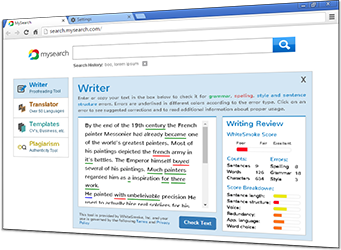3 Main Tenses - Stay Consistent!
No need to feel tension with verb tense. Just stay consistent!
The tense of a sentence is the time at which the action occured.
The 3 main tenses in English (and many other languages) are: Past, Present and Future. There are variations of each of these, but it is best to become totally comfortable and familiar with these in order to even attempt to understand the others.
The Rule
Consistency is Key
If you are writing about an event in the past - always use the past tense. The same applies for present and future. If you are unsure about which tense to use, simply refer to the last verb you wrote. As with every rule, there are exceptions - but consistency is always your safest bet.
An Example
We found a classic example of tense inconsistency on a website this week.
Here's the sentence, as we found it:
"As chief executive officer, Dorsey saw the startup through two rounds of funding by the venture capitalists who back the company."
We noticed something sounded wrong toward the end of the sentence. Try reading it again, and see if you feel similarly - that something just doesn't quite sit right.
The sentence is describing something that already happened (i.e. the start of a company). We know this, because of both the context, and the action verbs. The first verb of the sentence - "saw" - appears in the past-tense verb form.
Yet "back" is a present-tense form of the verb "back", meaning "support".
The Solution
The verbs must be made consistent. Since the action is in the past, the verbs need to reflect this. Therefore, "back" needs to be changed to "backed", in order to be in the proper, past-tense verb form.
(The source of our example error sentence is Wikepedia.com, a site that allows users the option to fix grammatical errors, which we love.)
Stay Consistent!
If you suspect tense inconsistency in your own writing, or the writing of others.
1) THINK about what "tense" or "time" the overall sentence is in - past, present or future.
2) LOCATE verbs (action words) in the sentence, and see what tense they are in.
3) RE-READ the sentence, to make sure you understand what it is saying.
4) RE-EXAMINE the verbs in the sentence, to make sure they are in a consistent tense.



